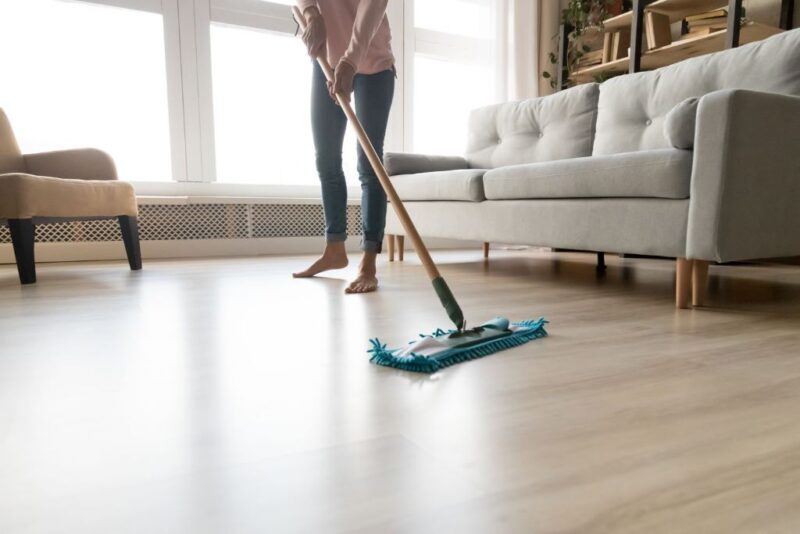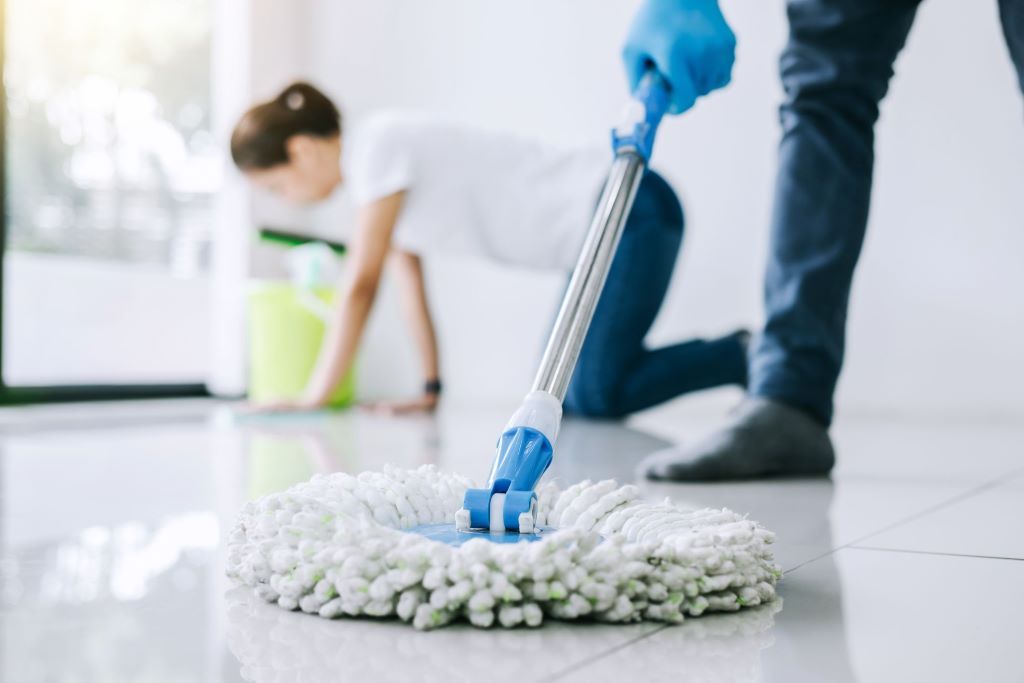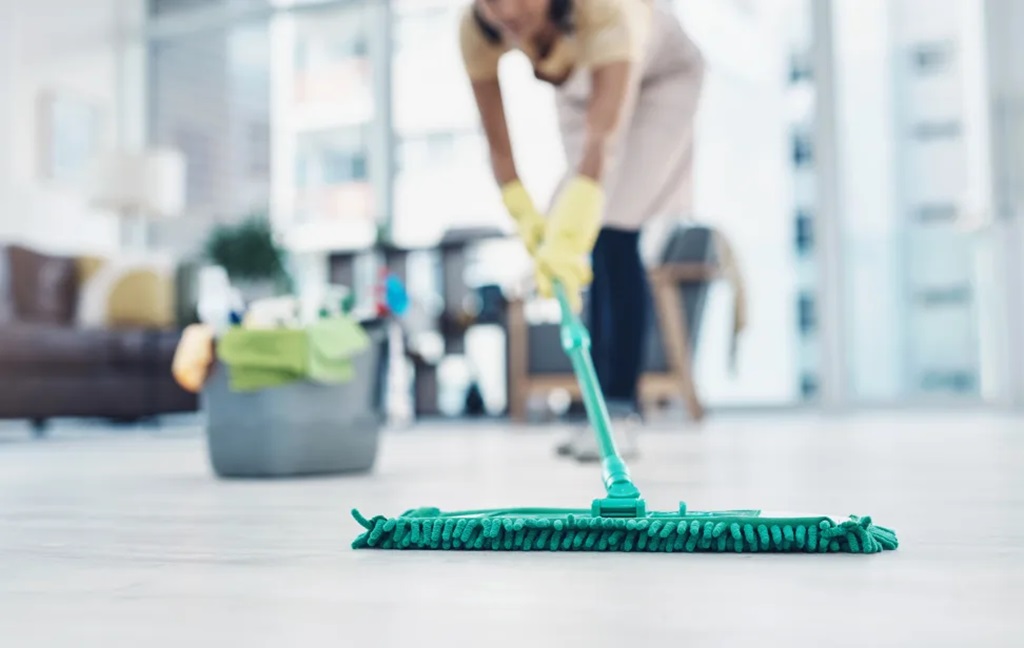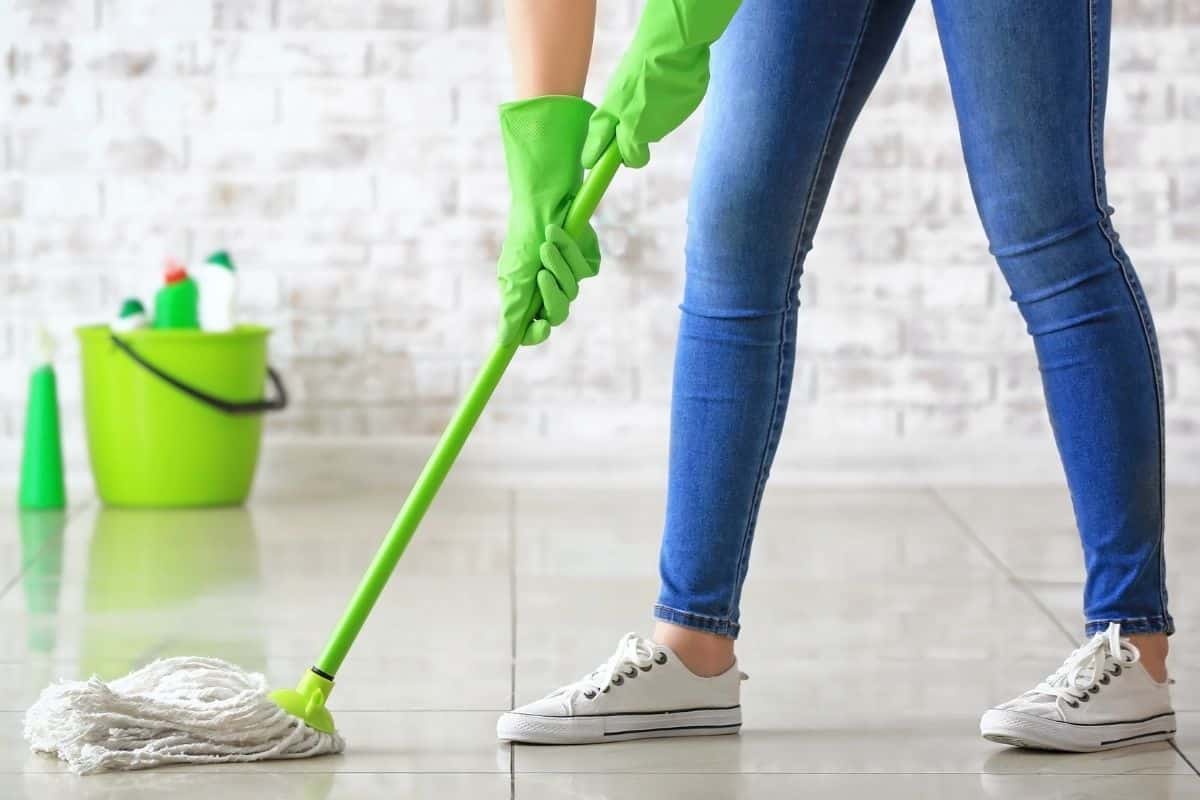Mopping floors is one of those household chores that never seems to end. No matter how often you mop, your floors get dirty again so quickly. With busy schedules and limited time, you may be tempted to mop every day to try keeping your floors looking clean. But is that really necessary or even a good idea for your floors? Let’s take a closer look at the pros and cons of daily mopping.
How Often Should You Mop Floors?
There’s no definitive rule for how often to mop floors. Recommendations range from once a week to once a month. The right mopping frequency for you depends on factors like:
- Number of people and pets in your home
- Amount of traffic areas receive
- Type of flooring material
- Personal preference for cleanliness standards
In general, here are some mopping guidelines to follow:
- Tile floors: At least once a week
- Vinyl floors: At least once a week
- Hardwood floors: Every 2-4 weeks
- Stone floors: Every 2-4 weeks
- Concrete floors: Every 2-4 weeks
Mopping more frequently than the minimum recommendations is fine if you want extra clean floors. However, mopping less often, especially if you notice the floor still dirty after mopping, risks allowing dirt, dust, and grime to build up. Regular cleaning not only enhances the appearance of your floors but also contributes to a healthier indoor environment.
Is Mopping Floors Every Day a Good Idea?
Mopping daily seems like it would keep floors spotless. But there are a few downsides to mopping this often that you should consider:
1. It may be excessive.
For most homes, mopping once a day is overkill. With an average family, floors won’t get visibly dirty that quickly. Mopping every 1-3 days is usually sufficient for getting floors clean. Going longer than 3 days can allow dirt to accumulate. But mopping even more often than that is unnecessary.
2. It wears down floor finishes.
Frequent mopping with cleaning products can prematurely wear away floor finishes like wax or sealant. This can damage and shorten the lifespan of vinyl, linoleum, laminate, and wood flooring.
3. It’s time-consuming.
Mopping floors takes time and effort. Making it a daily habit eats into time that could be better spent on higher priority tasks or leisure activities. Reassess how you spend your time to determine if daily mopping is the best use of your limited time.
4. It wastes supplies.
Mopping daily uses cleaning solutions and water faster than necessary. This can become expensive over time. Be mindful about your use of supplies to avoid incurring unnecessary costs.
5. It adds indoor air pollution.
Some cleaning solutions release volatile organic compounds (VOCs) into the air when used. Exposure to elevated VOC levels has been associated with negative health effects. Using fewer cleaning products lessens your exposure.
6. It’s tiring.
Having to mop every single day can feel tiring, tedious, and overwhelming. It may make you resent or avoid mopping altogether. Finding the right balance for your mopping routine is important for making it sustainable long-term.
So while mopping daily may sound good in theory, there are definite downsides. Mopping 2-3 times per week is usually sufficient for any home.
When Is Mopping Floors Every Day a Good Idea?
There are a few situations where daily mopping may be warranted:
– After renovations or construction.
Dirt, dust, and debris from projects can create quite a mess. Mopping daily helps keep floors clean until construction is complete.
– With pets who track in a lot of dirt.
Active outdoor pets can track in significant dirt on their paws. Mopping more often keeps this mess under control.
– During house training of pets.
Pets may have accidents before being fully house trained. More frequent mopping helps clean this up.
– When someone in the home has allergies.
Extra mopping reduces dust and allergens to provide relief.
– With toddlers or young children.
Little ones can make big messes. Frequent mopping is useful for cleaning up spills, art projects, and crumbs.
– During illnesses like the flu.
Mopping daily helps sanitize floors and prevent spread of germs when sickness is going around.
– In very high traffic areas.
Spaces like entryways may need mopping daily if they get extremely heavy use.
So in summary, daily mopping has its place but is overkill for everyday, routine floor cleaning in most homes.
Tips for Making Daily Mopping Quick and Easy
If you do need or want to mop that often, here are some tips to make it more manageable:
- Use a steam mop. Steam mops sanitize floors without need for cleaning chemicals. They heat up quickly and require minimal physical exertion.
- Spot mop only visibly dirty areas instead of mopping the entire floor. This saves time and supplies.
- Break it up. Mop different rooms or areas of the home on different days instead of doing everything daily.
- Enlist help. Having kids or other household members pitch in splits up the work.
- Listen to music or a podcast. Making mopping time more enjoyable prevents it from feeling like a chore.
- Use a timer. Challenge yourself to mop efficiently and quickly against a timer.
- Mop at non-peak times. Doing it early morning or late evening allows mopping without interrupting home activities.
- Multitask. Mop while taking phone calls or while kids are occupied with an activity.
- Make a quick daily mop part of your routine. Establish a pattern so it feels automatic like brushing your teeth.
With some creativity and efficiency, daily mopping doesn’t have to be overly time-consuming or labor-intensive.
Best Practices for Daily Floor Mopping
If daily mopping is needed in your home, keep these tips in mind:
- Sweep first to remove loose dirt and debris. This prevents spreading grit around with the mop.
- Use two buckets for mop water – one for suds and one for rinsing. Change water frequently to prevent redepositing dirt.
- Work in sections and mop yourself out of the room to avoid walking over wet floors.
- Don’t over-wet floors. Wring mop well and go over area just once if possible.
- Allow floors to fully dry between moppings to prevent buildup of moisture and growth of mold or mildew.
- Use a cleaner specifically made for your floor type like vinyl floor cleaner or wood floor cleaner. Avoid abrasive cleansers.
- For stone floors, avoid excessive wet mopping and use a stone floor cleaning solution.
- When using steam mops on wood floors, use care and lowest steam setting to avoid damage.
- Alternate between damp mopping and occasional deeper cleaning moppings for best results.
Daily mopping works best if done lightly and with care to avoid issues like warping or discoloration. Be mindful of the risks of over-mopping certain floors.
Alternatives to Frequent Mopping
If daily mopping won’t work with your schedule or floors, consider these options instead:
– Dry mopping or sweeping.
This removes surface dirt between wet moppings. Great for quick daily cleansing.
– Vacuuming.
Vacuuming picks up dirt and is faster than mopping. Useful for carpets and some hard floors.
– Dusting.
Wiping down floors with microfiber cloths traps dust and pet hair.
– Floor mats.
Placing mats at entrances and in high traffic areas contains dirt and moisture. Shake out or launder mats as needed.
– Area rugs.
Natural fiber rugs hide dirt between moppings. Clean and rotate rugs out for washing.
– Robotic vacuums or mops.
Letting technology do the work for you saves time and effort.
– Going shoeless.
Removing footwear inside lessens how much dirt is tracked daily.
With the right combination of these techniques, you can minimize daily floor dirt without having to mop every single day.
FAQs
Is it okay to mop wood floors every day?
No, mopping solid hardwood floors daily risks damaging the wood. The excess moisture can cause warping, discoloration, and fungal growth. Limit mopping to 1-4 times monthly.
Can you steam mop every day?
Steam mops can be used daily in homes with high traffic, pets, or illness. But for routine cleaning, 2-3 times per week is better to avoid wearing down floors.
What floors can you mop daily?
Tile, vinyl, laminate, linoleum, and sealed concrete floors stand up best to daily mopping. Use with care on wood, natural stone, and unsealed concrete.
Is Swiffer safe for everyday use?
Swiffer wet mopping is generally safe for daily use due to the light moisture and disposable pads. But over-mopping can still wear down finishes over time.
Should I mop with vinegar every day?
White vinegar is a natural cleaner suitable for daily use. But rinse floors well and alternate with water-only mopping to prevent buildup of acidity.
Conclusion
Mopping floors every single day provides the ultimate in clean floors. But for most homes, it goes beyond what is necessary for routine maintenance. The optimal mopping frequency balances your cleanliness desires with preserving your floors and your time.
Aim to mop heavily trafficked hard surface floors around 2-3 times per week. Use other cleaning methods like vacuuming on the off days. For floors like wood or natural stone, mopping 1-4 times monthly is better. Adapt as needed for messes from pets, kids, or illnesses.
The goal is clean, sanitary floors without creating excessive work for yourself or jeopardizing the integrity of your flooring. Finding the right mopping routine specific to your home life and flooring allows you to achieve a happy medium.
Transform your outdoor space with creative and functional patio deck ideas to suit your lifestyle, and with the right techniques, enjoy floors that look freshly mopped each day without the hassle of daily cleaning!




